Just looking for our Best Hardscape Design Website examples list?
Why Your Hardscaping Website Design Matters More Than Ever
First impressions are made in milliseconds, and for your landscaping business, your website is often the first and most impactful touchpoint. A polished, high-performing landscape website doesn’t just look good—it becomes your digital sales rep, working around the clock to convert visitors into leads.
In an industry where visuals, trust, and credibility drive purchasing decisions, your site must do more than list services and display contact information. It should guide potential customers through your offerings, showcase your expertise in landscape design, and make it easy to take action with clearly placed calls to action. Done right, a strategic hardscaping website builds trust, ranks well in search engine results, and keeps your phone ringing.
Many landscape companies invest in equipment and crews, but overlook the engine that fuels their growth online. This guide will walk you through everything—from design elements that drive engagement to search engine optimization strategies that put your landscaping service in front of the right audience. Whether you’re a lawn care specialist or a full-service landscape design firm, your website’s performance is tied directly to your business results.
Let’s explore how to create a high-converting hardscaping site that attracts the right website visitors and transforms them into clients.
Landscaping Company Website Planning and Purpose
Before any pixels are pushed or code is written, successful websites begin with a clear plan. The planning phase is where most businesses gain or lose traction. Skipping this step leads to generic, underperforming sites that fail to connect with potential customers.
At the core of your planning should be a deep understanding of your audience. Are you targeting residential homeowners, commercial clients, or municipal contracts? Each group has different expectations, pain points, and decision timelines. Planning also involves identifying your primary conversion goals—do you want visitors to call, fill out a quote form, or schedule a consultation?
Site architecture is another essential component. Organize your content into clearly defined service pages, with a logical navigation menu that helps users find what they need fast. Be sure to map out calls to action across your site, guiding users from curiosity to conversion. Planning should also include content strategy—what pages will you need to educate, engage, and convert?
In addition, planning should account for search engine visibility. A well-planned site integrates local SEO strategy, keyword research, and optimized URL structures right from the start. This ensures your site performs not just for users, but also for Google.
If you’re not sure where to start with the basics, review our Core Principles of Web Design to get grounded in the essentials. By planning intentionally, you build a foundation for a website that doesn’t just look good, but works hard for your landscaping business every day.
Professional Website Design Principles
Designing for this industry requires more than aesthetic appeal—it demands usability, clarity, and conversion strategy. The most effective websites for landscapers focus on delivering a seamless experience from first glance to final click.
Start with visual hierarchy. Visitors need to immediately understand what your company offers and how to engage with you. This means large, clear headlines, compelling visuals of real projects, and prominent calls to action. Don’t clutter the layout—embrace white space to allow important content to breathe and guide the eye naturally through the page.
Responsiveness is essential. Your site should look and function flawlessly on any screen size, especially mobile devices, which often drive a majority of website traffic in this industry. Ensure buttons are easy to tap, text is readable, and images scale appropriately without compromising quality.
Color and typography matter. Use a consistent palette that reflects your brand and nature-based services—think earth tones, clean greens, and warm neutrals. Pair this with legible fonts and consistent styles for headings, body text, and buttons. The goal is readability that complements your message.
Usability must be a top priority. Design your navigation to be intuitive and service-specific. Don’t bury key pages like your contact form, project portfolio, or service areas. Every interaction should reduce friction for the user while leading them closer to a decision.
Images and galleries are powerful trust-builders. Use high-resolution photos of completed projects, organized by service type or location. Add short descriptions to provide context and showcase the value delivered.
Lastly, build for speed. Heavy image files and unoptimized plugins can slow down your site and cost you search engine rankings. Fast load times help retain users and signal quality to Google.
For a deeper dive into creating high-performing design systems, visit our Step-by-Step Guide to the Web Design Process. These foundational principles ensure your website is attractive and engineered for measurable success.
Lawn Care Website Content and Navigation
Your website content should act as a guide for your audience, not a maze. Effective websites are built around well-organized content that speaks to the specific needs of your customers. Every page should answer a question, solve a problem, or reinforce your credibility.
Start by mapping out your main pages. At a minimum, your site should include Home, About, Services, Portfolio, Testimonials, Blog, and Contact. Each of these core sections serves a distinct purpose. Service pages should be broken down by category—retaining walls, patios, outdoor kitchens—each with its own page optimized for search intent. This structure improves user experience and SEO.
The content on each page should be straightforward and benefits-focused. Avoid industry jargon and speak directly to your audience’s challenges and goals. Highlight your process, timelines, and results with clear, concise language. Action steps should be visible throughout, directing visitors to request an estimate, schedule a call, or view more work.
Your navigation must be intuitive and user-friendly. Keep the top menu clean with no more than 6–7 main items. Use dropdowns to organize subpages logically. Always include a visible contact button in the header and footer. Sticky navigation or anchored calls to action are especially effective for mobile visitors.
Link related content across your site to keep users engaged. For example, link your outdoor kitchens service page to relevant project galleries or blog posts about design tips. This internal linking boosts engagement and supports SEO by helping search engines understand your site structure.
A thoughtful content and navigation plan allows visitors to move effortlessly through your site. It keeps them informed, builds confidence, and reduces the number of clicks required to take the next step. In this competitive specialty, clarity like this can be the difference between a visitor bouncing to a competitor’s site and a visitor converting.
Visual Elements of Landscaping Web Design
In this industry, strong visual content is more than decoration—it’s a key business driver. When potential clients visit your site, they’re not just looking for service descriptions. They want to see what you’ve done and envision what you can do for them.
Every visual element on your website should serve a purpose. High-quality photos of past projects demonstrate craftsmanship and establish credibility. Galleries should be organized by service type, location, or material used, so users can easily browse examples that match their interests.
Videos are another powerful tool. Short clips showing time-lapse project builds or client testimonials can create an emotional impact and drive engagement. Drone footage and before-and-after transitions add a professional touch that reflects the level of service you provide.
Brand consistency is also crucial. Use your logo, brand colors, and visual themes consistently across all visuals. This helps reinforce recognition and trust. Image captions and short descriptions enhance accessibility and provide helpful context for users and search engines alike.
Visual hierarchy should guide the user’s journey through the site. Use large, bold images to draw attention to featured services or hero sections, and support them with smaller images or icons that explain next steps.
Remember to optimize all visual elements for speed. Compress images without compromising quality, implement lazy loading, and use modern formats like WebP where appropriate.
If you’re seeking inspiration on how to bring these elements together seamlessly, explore our insights on landscaping website design to see how visual storytelling and design consistency elevate user experience. When visuals are planned with intention, they enhance the aesthetics of your site, and they actively drive conversions and support your brand identity.
An Ongoing Online Presence Means WordPress Maintenance
A high-performing WordPress site isn’t something you launch and forget. Like any vital business tool, it requires regular maintenance to stay secure, functional, and effective. An outdated or broken website can cost leads, hurt search rankings, and diminish credibility.
Start with updates. WordPress core, themes, and plugins must be updated consistently to keep your site secure and compatible with new features. Outdated software increases the risk of vulnerabilities and can break essential functionality.
Backups are your insurance policy. Schedule automated backups on a daily or weekly basis, depending on how frequently your site changes. Store backups offsite and confirm they can be restored quickly in case of an emergency.
Security monitoring is essential. Use reputable tools to scan for malware and track login attempts. Enable two-factor authentication and limit user access only to those who need it. This helps prevent unauthorized access and protects client data.
Performance monitoring ensures your site stays fast and responsive. Check loading speeds regularly, especially after installing new plugins or updating content. Optimize your database, clear out unused files, and monitor uptime so your website is always available when potential clients visit.
Maintenance should also include content checks. Periodically review your services, images, and contact details to ensure everything remains accurate and up to date. Remove outdated promotions and keep your blog active with fresh content that supports SEO.
For contractors focused on delivering quality service, partnering with a trusted provider for website maintenance can save time and prevent problems. Regular maintenance ensures your digital presence reflects the same professionalism and reliability you bring to every hardscaping project.
Best Landscaping Website Design Examples
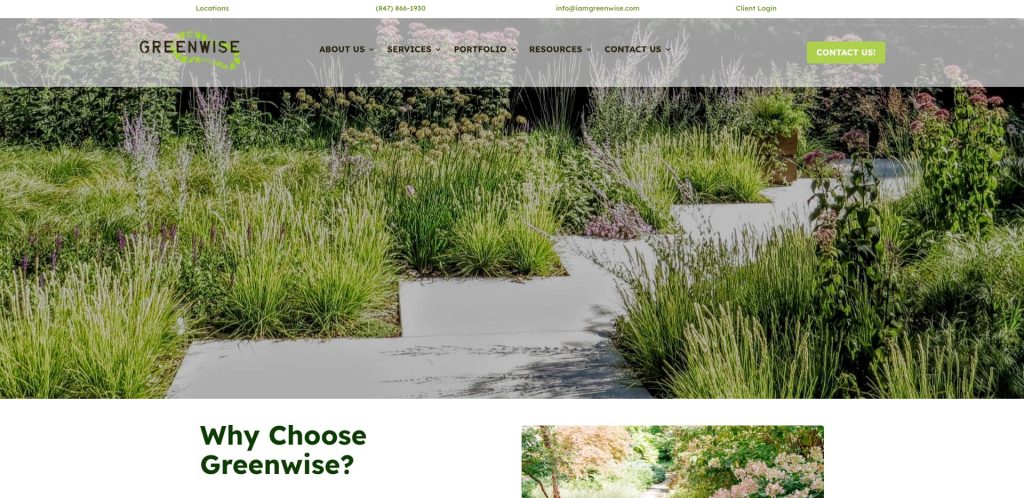
1. Greenwise Organic Lawn Care
Location: Evanston, IL
Key Takeaways:
- Beautifully branded with a calming green color palette and garden design motifs.
- Clean navigation and strong messaging make it easy to understand services.
- Great use of customer testimonials and community impact stories.
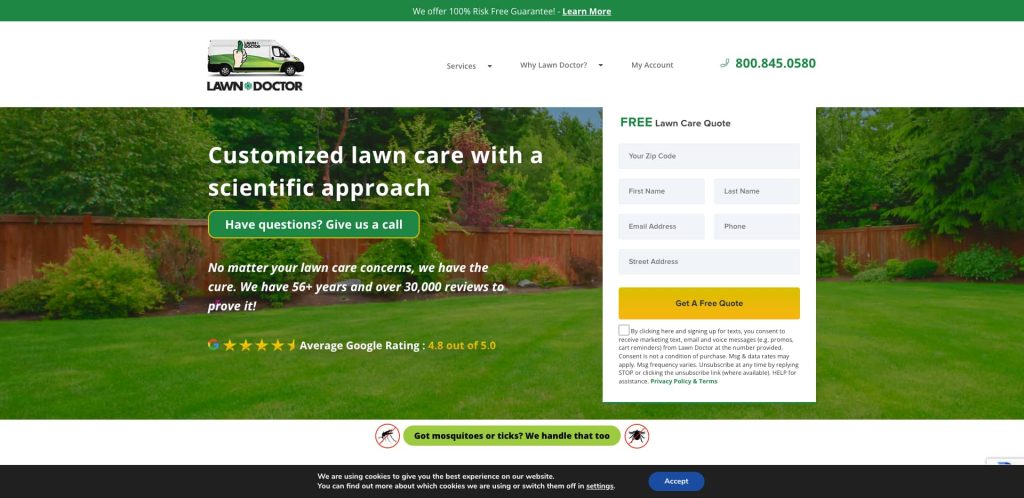
2. Lawn Doctor
Location: Holmdel, NJ
Key Takeaways:
- Bold homepage banner that highlights seasonal services.
- Integrated online booking makes it easy for visitors to schedule.
- Strong use of location targeting across the site.
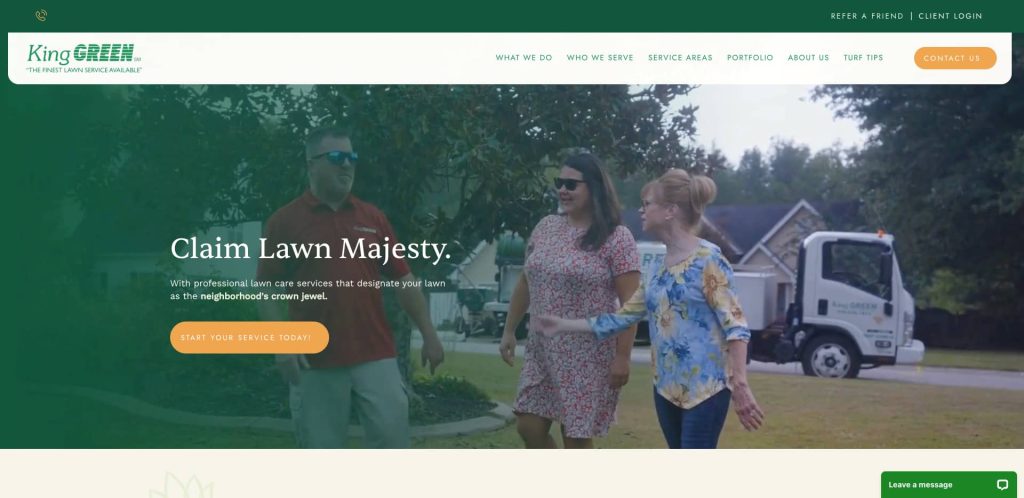
3. King Green
Location: Gainesville, GA
Key Takeaways:
- Bright and welcoming homepage with clear service categories.
- Simple but effective use of icons and visuals for each service area.
- Focused content helps guide users from info to conversion.
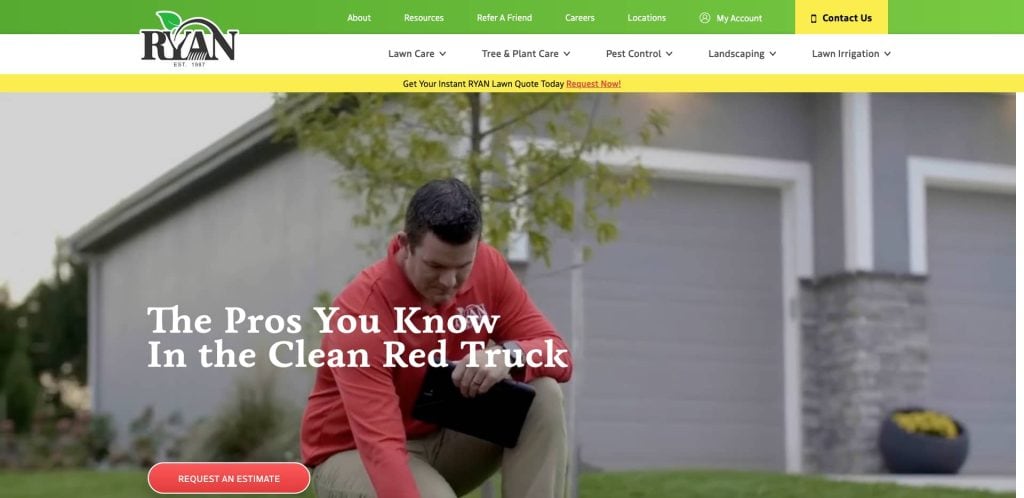
4. Ryan Lawn & Tree
Location: Overland Park, KS
Key Takeaways:
- Modern responsive design with strong calls to action.
- Visual storytelling through project galleries and customer success.
- Uses visual design to communicate professionalism and experience.
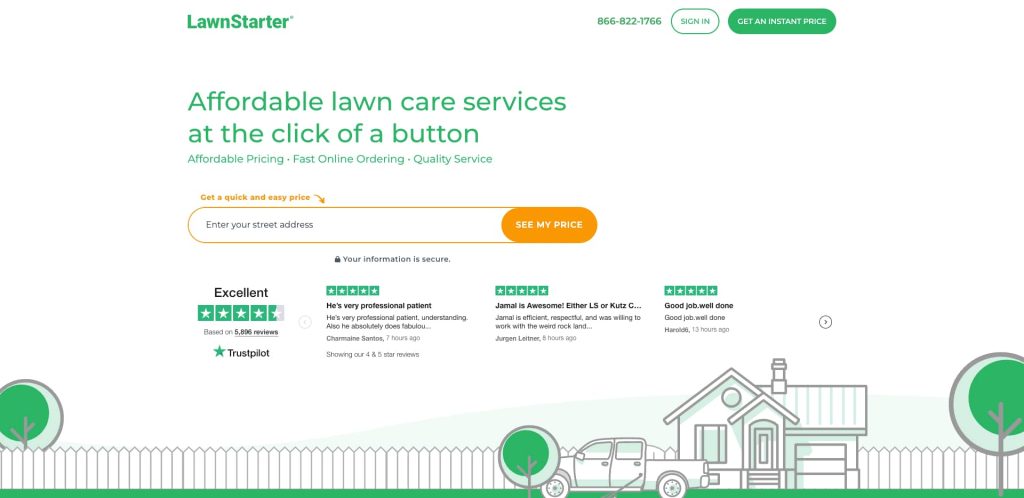
5. LawnStarter
Location: Austin, TX
Key Takeaways:
- Web app interface with instant quote generator.
- Clean design with a fun, fresh color scheme.
- Leverages SEO-driven content on service pages and blog.
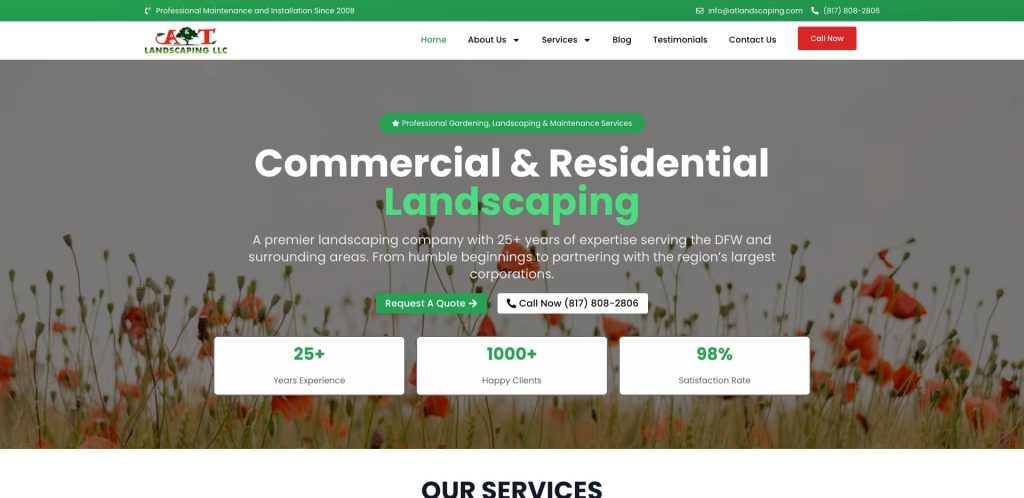
6. All Terrain Landscaping
Location: Greeley, CO
Key Takeaways:
- Modern WordPress website with bold visuals and easy contact options.
- Highlights landscape projects with an intuitive gallery.
- Fast load speed and professional design elevate the brand.
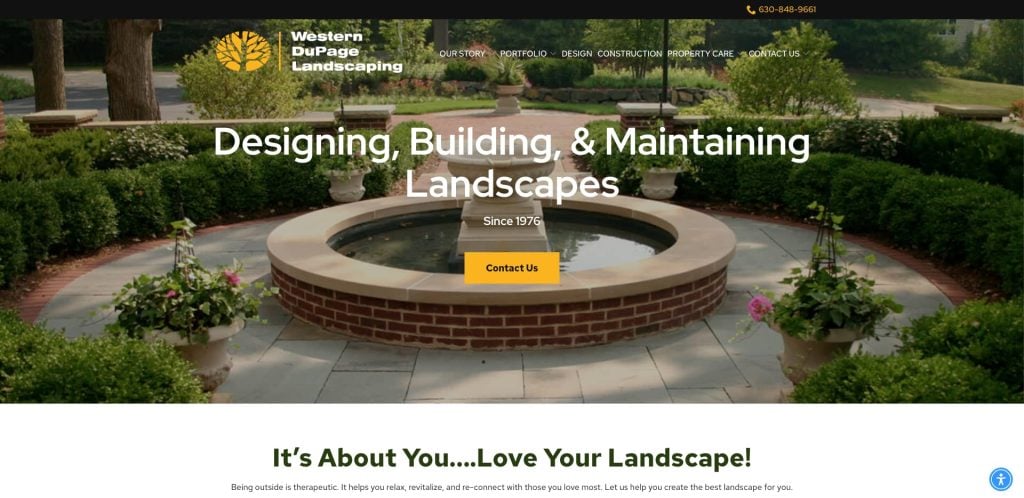
7. Western DuPage Landscaping
Location: West Chicago, IL
Key Takeaways:
- Streamlined homepage experience and visual emphasis on outdoor spaces.
- Strong branding that reflects expertise and local presence.
- Sections guide visitors from interest to quote request quickly.
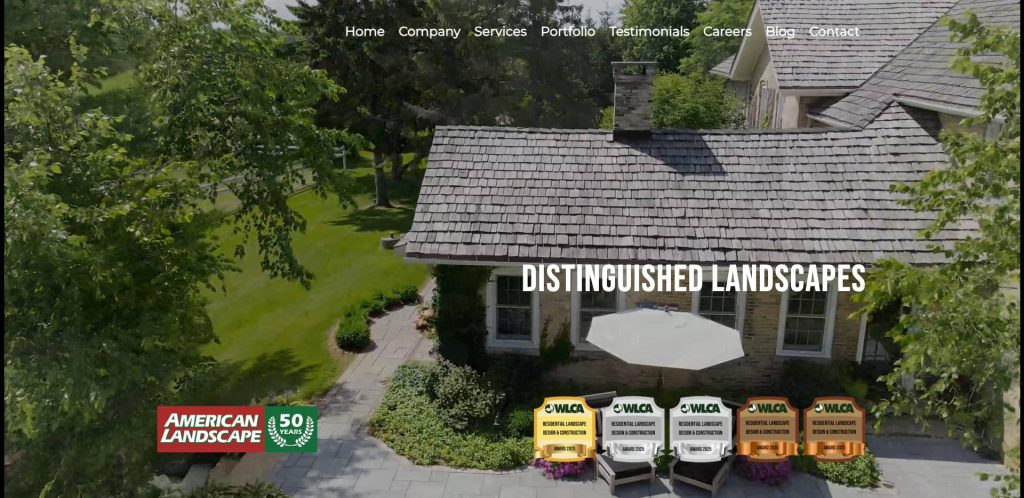
8. American Landscape
Location: Brookfield, WI
Key Takeaways:
- Sharp, image-driven homepage to highlight high-end projects.
- Responsive web design across mobile and tablet devices.
- SEO-friendly content across all key areas of the website.
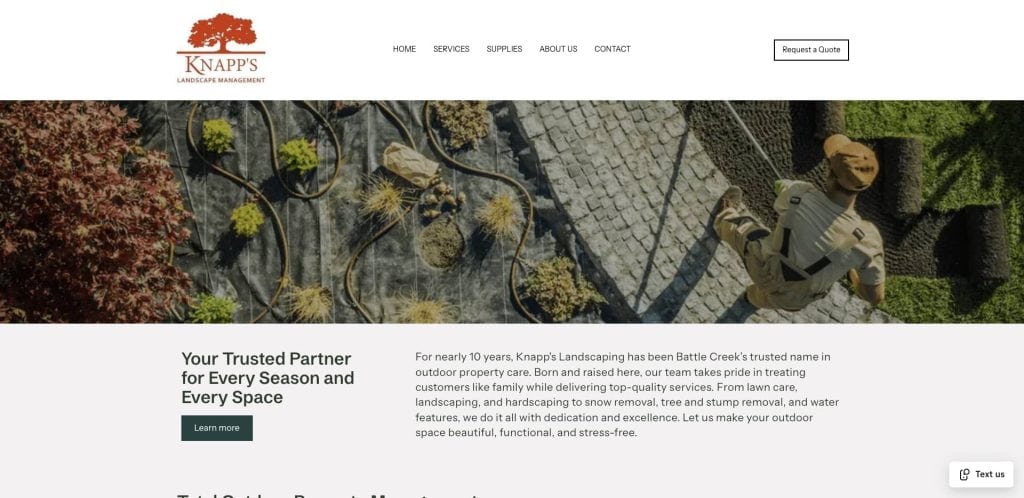
9. Knapp Landscaping
Location: Itasca, IL
Key Takeaways:
- Elegant garden design visuals and refined typography.
- A user-friendly website layout that supports easy navigation.
- Professional design helps you convert website visitors with clear CTAs.
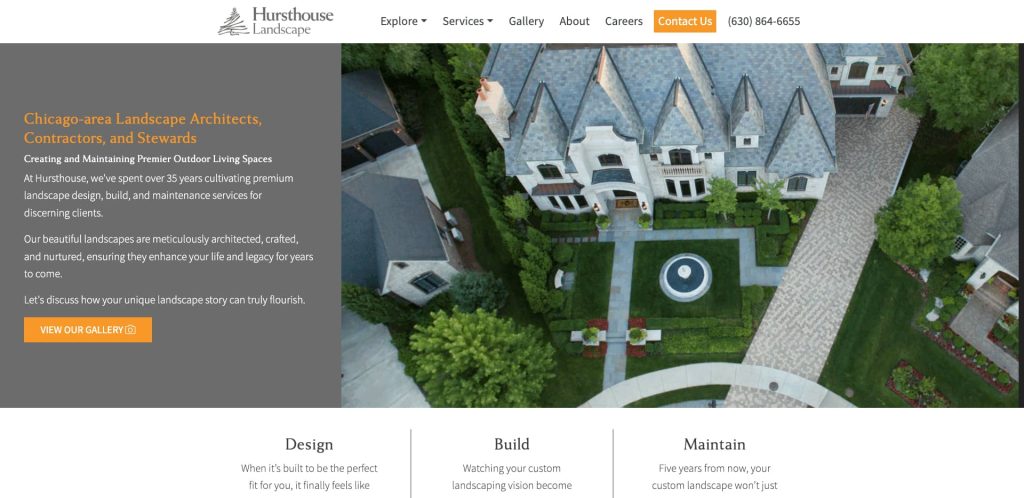
10. Hursthouse Landscape Architects
Location: Bolingbrook, IL
Key Takeaways:
- Clean design that showcases upscale landscape architecture.
- Engaging portfolio with high-quality imagery.
- Thoughtful UX makes it easy to explore areas of your website.
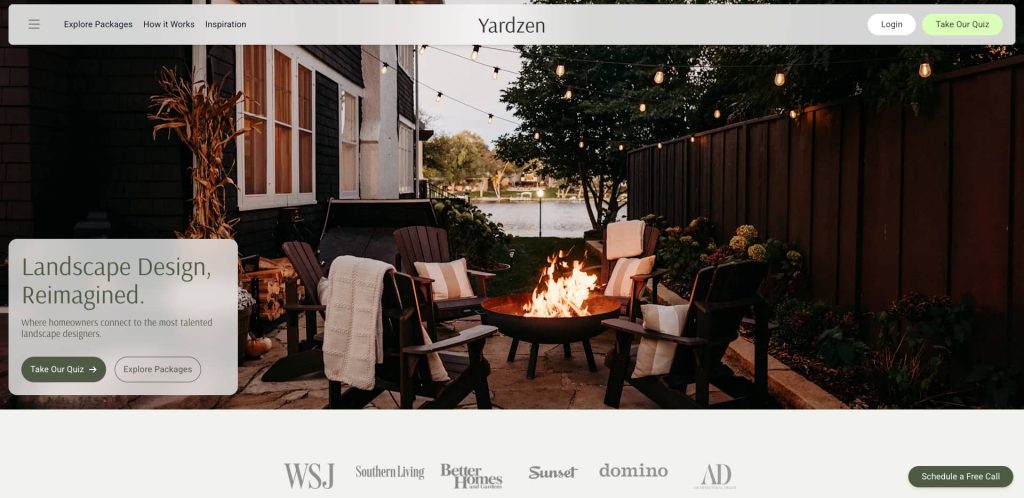
11. Yardzen
Location: Sausalito, CA
Key Takeaways:
- Strong visual storytelling and design trends are reflected in UX.
- Garden design packages are clearly explained and priced.
- Features a quiz-based lead capture tool.
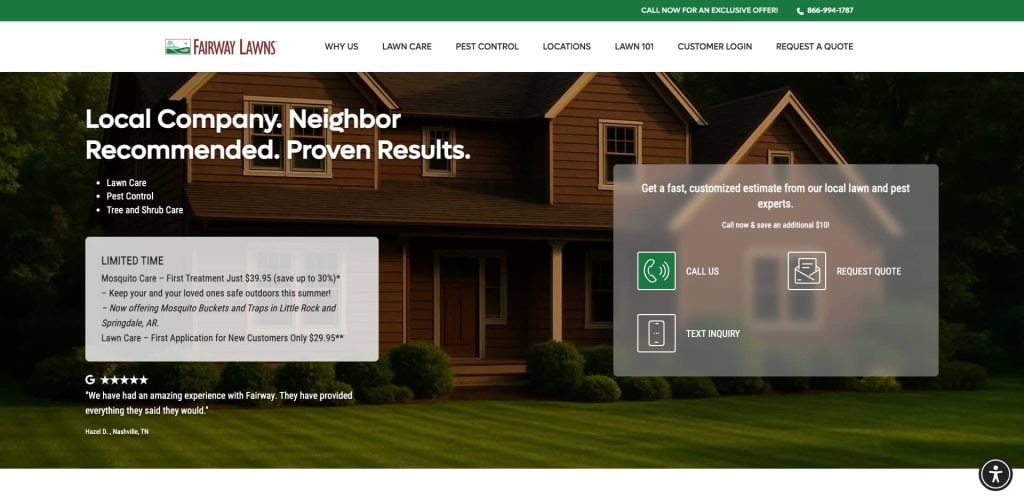
12. Fairway Lawn & Tree Service
Location: Birmingham, AL
Key Takeaways:
- Detailed service pages with clean layout and icons.
- Visual design highlights seasons and treatments.
- Strong CTAs and quote form placement throughout.
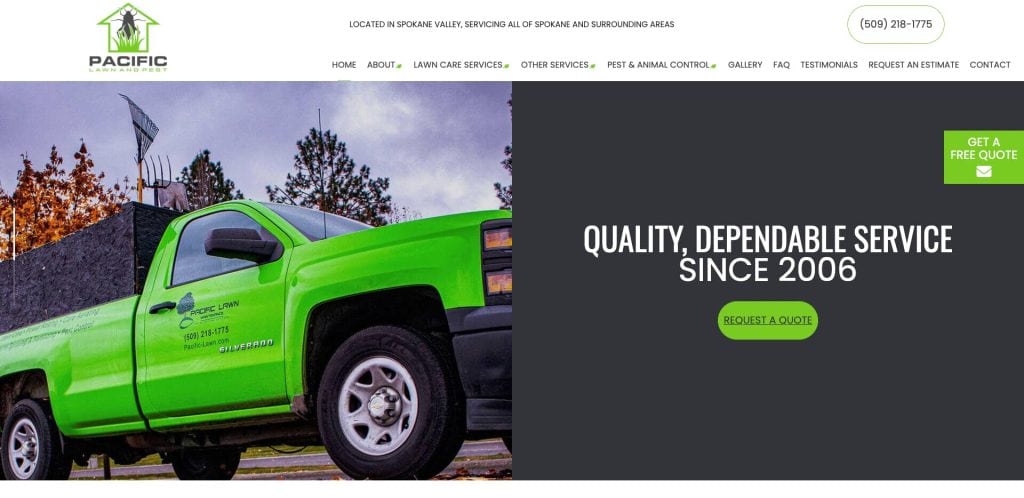
13. Pacific Lawn Maintenance
Location: Spokane, WA
Key Takeaways:
- Great use of brand colors and consistent styling.
- Highlights team photos and community involvement.
- Clear messaging helps users quickly find your website relevant.
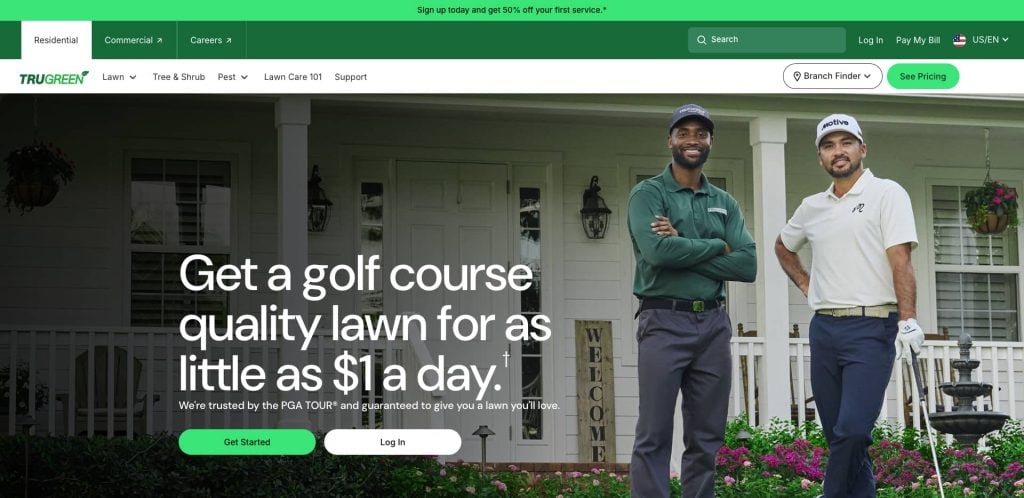
14. TruGreen
Location: Memphis, TN
Key Takeaways:
- National brand with localized pages and pricing.
- Easy-to-use location finder and booking tool.
- Emphasizes lawn health with visual infographics.
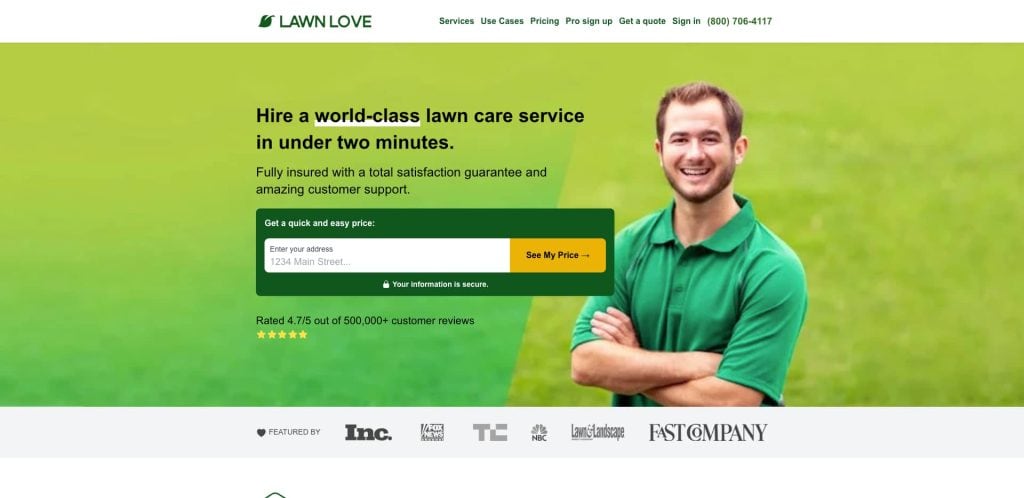
15. Lawn Love
Location: San Diego, CA
Key Takeaways:
- Slick website builder-style interface with mobile-first design.
- Features customer login and online booking.
- Homepage CTA draws users right into service matching.
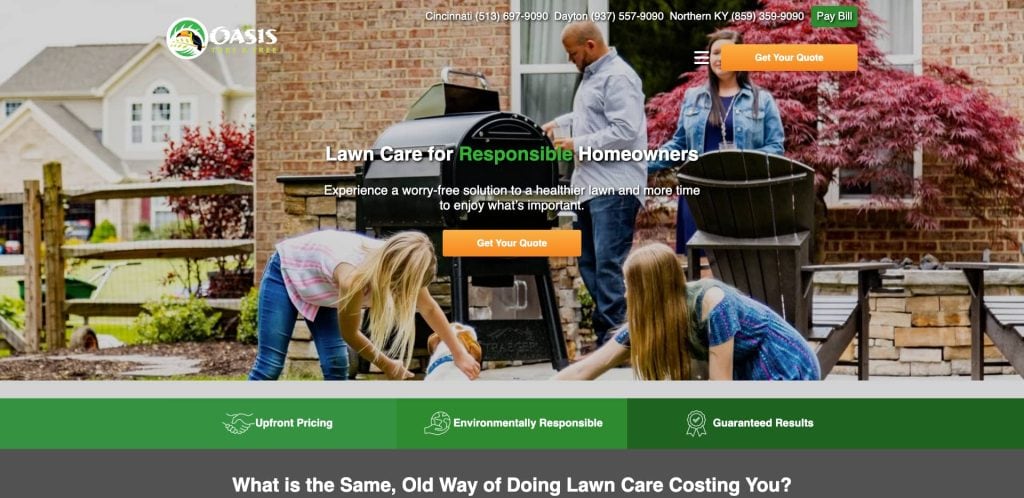
16. Oasis Turf & Tree
Location: Loveland, OH
Key Takeaways:
- Strong branding is supported by a clean layout and copy.
- Focus on educating the customer with in-depth resources.
- Use of landscape tips improves the content on your website.
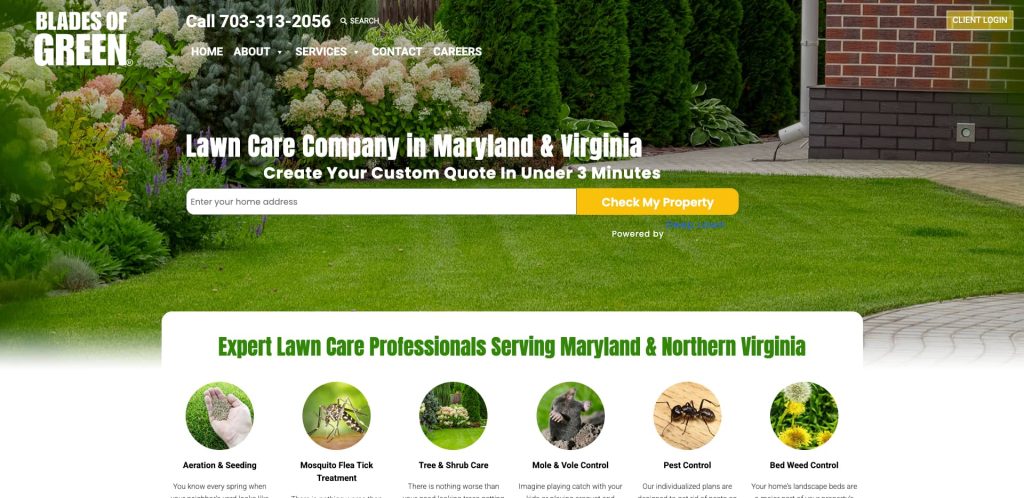
17. Blades of Green
Location: Edgewater, MD
Key Takeaways:
- User-friendly website with vibrant visuals and easy navigation.
- Garden design services are well-explained through blogs and videos.
- CTA-driven homepage designed to convert.
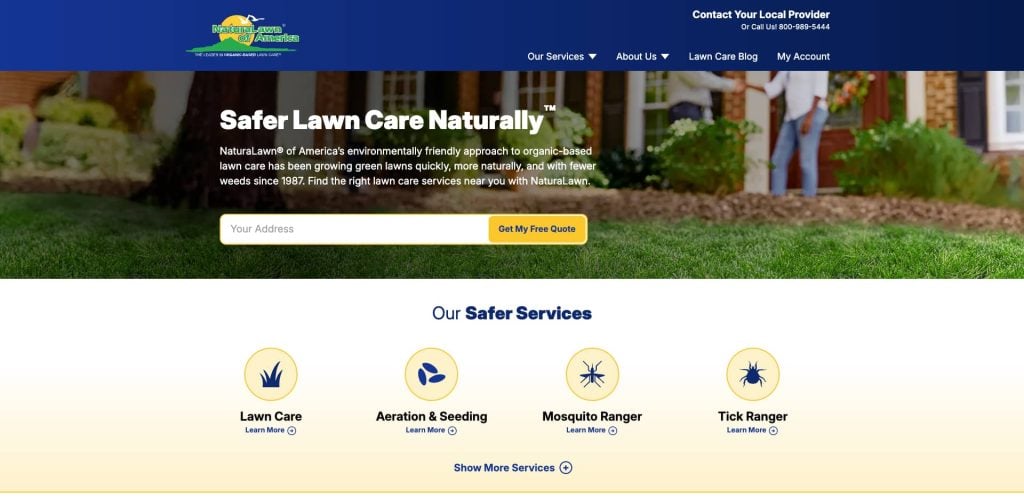
18. NaturaLawn of America
Location: Frederick, MD
Key Takeaways:
- Content-rich homepage with search engine-friendly layout.
- Strong internal linking improves user flow across areas of your website.
- Highlights eco-friendly credentials and differentiators.
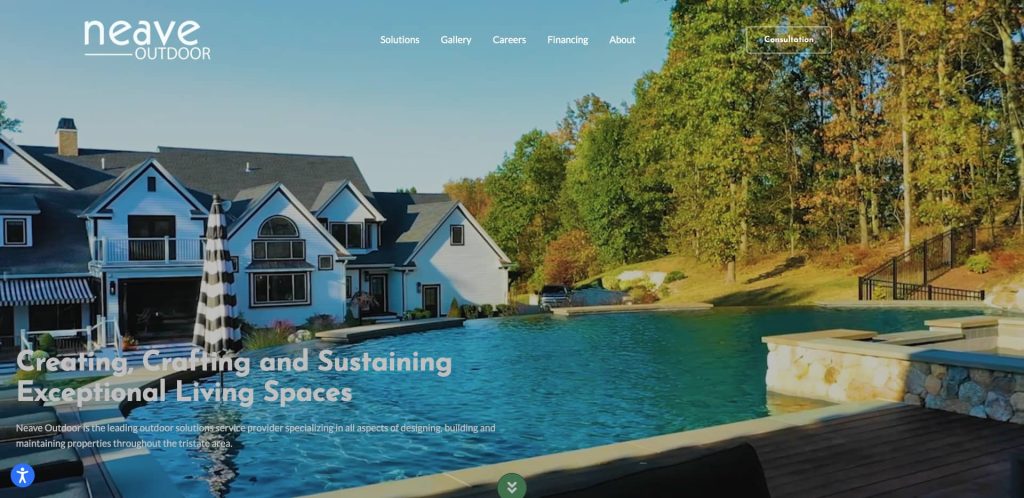
19. Neave Group Outdoor Solutions
Location: Wappingers Falls, NY
Key Takeaways:
- Landscape projects are displayed with compelling photo grids.
- Multi-service layout supports hardscape, maintenance, and snow removal.
- Blog strategy supports SEO and credibility.
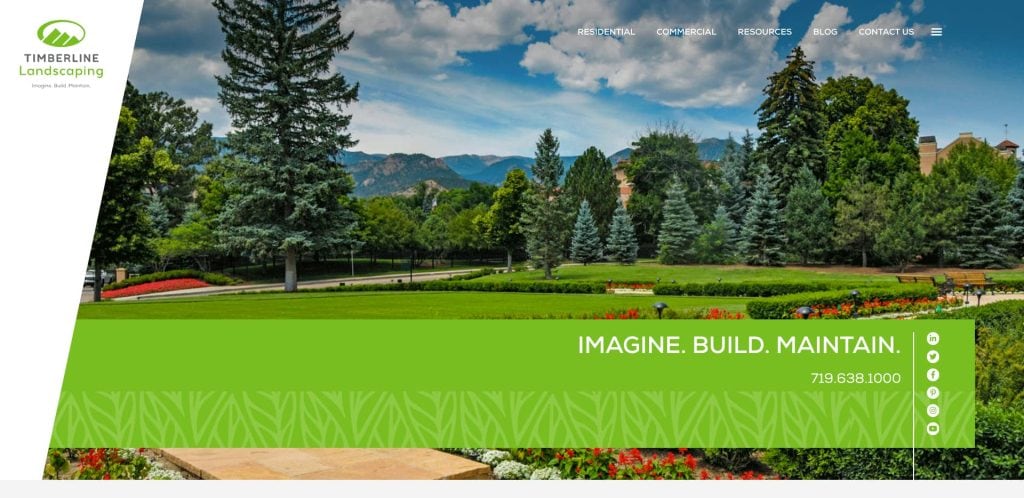
20. Timberline Landscaping
Location: Colorado Springs, CO
Key Takeaways:
- Clean homepage with responsive layout and excellent structure.
- Professional design helps your website feel high-end.
- Strong service page structure supports a search for landscaping services.
Build a Website That Works as Hard as You Do
A well-designed website isn’t a luxury in the landscape industry—it’s a growth engine. Whether you’re showcasing hardscape work, guiding visitors through your company’s website, or generating local leads, your site should reflect the quality of your services and the professionalism of your team.
If your current site doesn’t feel like your best landscaping website—or you’re starting fresh—now is the time to invest in a better website built for performance. From responsive design to clear calls to action, every detail should support your goals and make it easy for clients to take the next step.
Our team specializes in creating a professional and effective website tailored to your landscaping business. If you’re ready to start building a professional landscaping presence online, schedule your free consultation today and get expert guidance from a web design agency that knows the landscape.
Hardscape Site Design FAQs
What pages does a landscaping business website really need?
A landscaping business website should include core pages like Home, About, Services, Portfolio, Testimonials, Contact, and a Blog. Each page supports a different user intent and helps establish trust. Consider your specific landscaping website needs and prioritize a clean design that makes it easy for visitors to navigate.
How do I make my website attract more local landscaping clients?
To reach more clients searching for landscaping services in your area, use local SEO strategies like location-specific keywords, Google Business Profile integration, and service-area pages. A responsive web design paired with accurate local listings helps your website appear higher in search results.
What makes the best landscaping website stand out?
The best landscaping websites combine great design, clear messaging, high-quality visuals, and fast load times. Your website should reflect your professionalism, include photos of your team, and provide compelling action buttons that help you convert website visitors into leads.
Can I use a website builder, or do I need a web design agency?
While a website builder may work for basic sites, a web design agency can deliver a user-friendly website that aligns with your brand and supports long-term growth. For those serious about optimizing their website, an agency ensures every element—from visual design to technical SEO—is handled professionally.
What is the cost to build a landscaping website?
The cost to build a landscaping website varies depending on features, size, and whether you’re using a custom WordPress website or a template. Investing in a professional design upfront ensures your site functions as a powerful lead generation tool.
How often should I update content on your website?
Fresh content keeps your site relevant and supports SEO. Update your blog regularly with landscaping tips, project highlights, and seasonal service promotions. Keep the rest of your site current with accurate services, updated team photos, and timely responses to visitor action.
How important is responsive design in this industry?
Responsive design is critical. Most users will visit your website on a mobile device, so your site must scale and perform well across all screen sizes. This improves engagement and ensures your website, which attracts the right clients, stays competitive in search.
What design trends should landscaping companies pay attention to?
Trends like clean design, interactive galleries, and modern typography help your website not only look great but also reflect innovation in the landscape industry. Stay current by periodically reviewing landscaping web design examples and aligning with user expectations.
How can I improve website speed and performance?
Compress images, minimize plugin use, and leverage caching tools to boost website speed. A faster website helps your website rank higher in search engines and improves user satisfaction.
Why does professional design matter for a landscaping site?
Professional design supports credibility, increases engagement, and makes it easier for visitors to take action. A well-designed website that reflects your brand and showcases your landscape projects builds trust and grows your client base.



